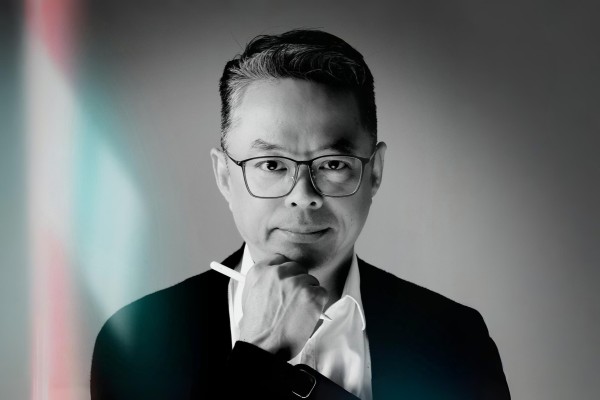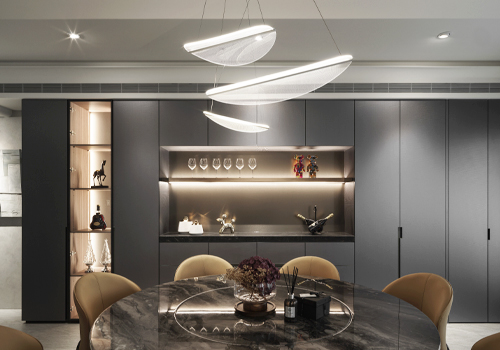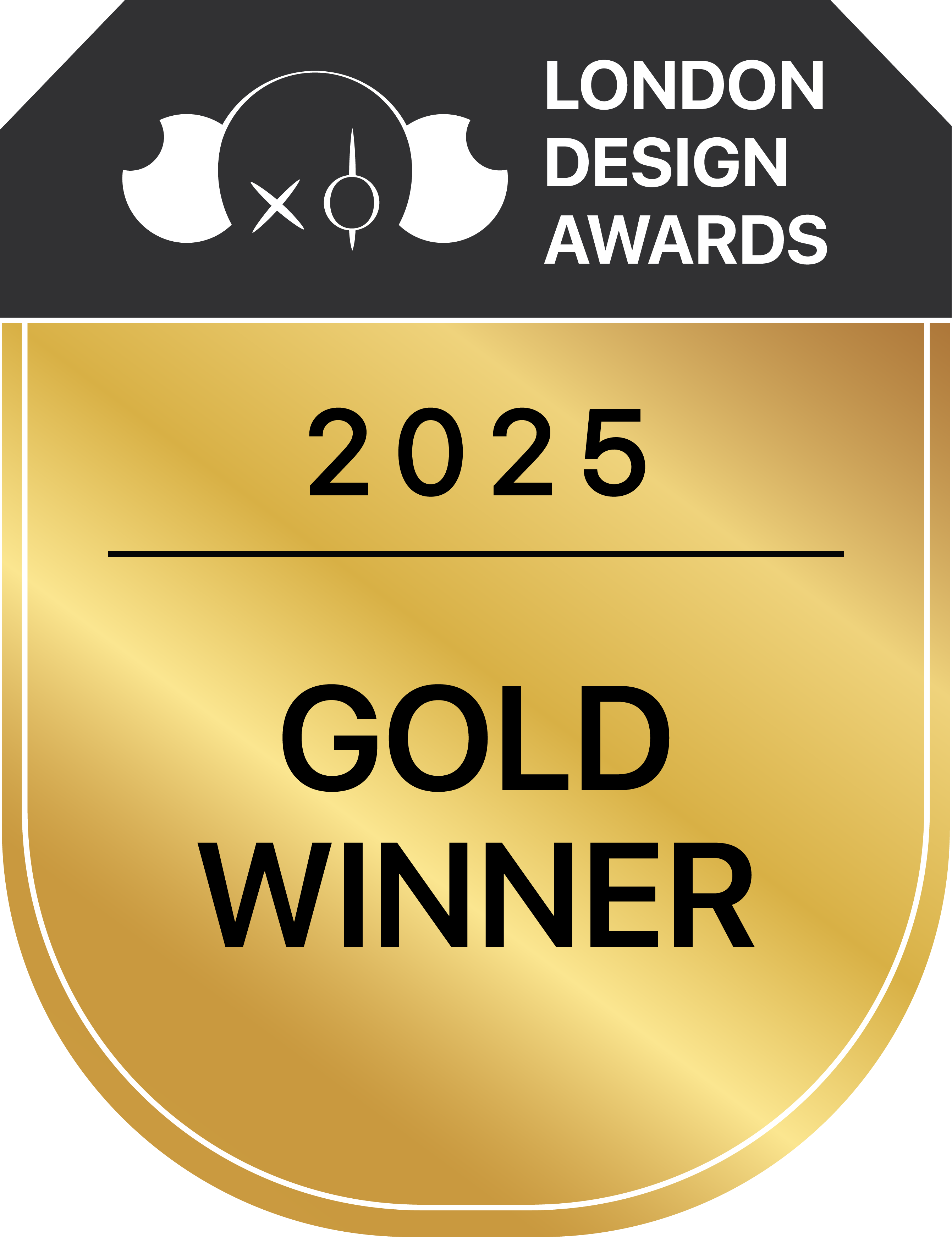
Chih-Cheng Chang
1. Congratulations on winning the London Design Awards! Can you introduce yourself and share about what inspired you to pursue design as a career?
I am Chih-Cheng Chang, an interior designer from Taiwan with over 30 years of professional experience in the field. A graduate of Fu-Hsin Arts School and currently pursuing a master’s degree at Chung Yuan Christian University, I have dedicated my career to achieving a balance between rational structure and emotional expression in design. Through precise proportions, thoughtful material selection, and nuanced interplay of light and shadow, my work emphasises sustainability and innovation.
With a lifelong passion for art and an eye for beauty in everyday life, I believe that every space deserves to be seen and understood in its own right. Design, to me, is more than aesthetics—it is a way to reveal a space’s story and honour its inherent value. Interior design is not just about creating stylish environments; it is about crafting happiness and realising dreams.
2. What does being recognised in the London Design Awards mean to you?
We are deeply honoured to receive recognition from the London Design Awards. This accolade is not only an affirmation of our team’s design philosophy and creative practice but also a powerful motivation for us to continue pushing boundaries and refining our craft.
3. How has this achievement impacted your career, team, or agency, and what opportunities has it brought so far?
Winning the London Design Awards is a meaningful recognition for both me and my team. It has significantly elevated our visibility within the global design arena and reinforced our dedication to the values of design excellence. This achievement has opened doors to potential collaborations with international brands, architects, and design institutions, while also facilitating deeper engagement with the global design community.
Professionally, this award has prompted us to further reflect on our approach to sustainability, materials, and spatial storytelling. It also strengthens our mission to bring the essence of Taiwanese culture into contemporary design, offering a fresh interpretation of Eastern aesthetics.
We are currently exploring new international partnerships that align with our belief that design is not just about space—it is a philosophy of living and a bridge across cultures.
4. What role does experimentation play in your creative process? Can you share an example?
To me, experimentation is the origin of design innovation. It encourages us to break habitual thinking and explore deeper possibilities in space and materials. In this awarded project, I transformed an originally low and oppressive beam structure by integrating RGB flexible lighting with natural light guidance.
This created a poetic visual language of light and shadow, where the interplay of light and time brought a living rhythm to the space, reflecting my commitment to both sustainability and emotional resonance in design.
5. What's the most unusual source of inspiration you've ever drawn from for a project?
Over a decade ago, I became fascinated by the contrast between the raw texture of concrete and the warmth of wood—the coexistence of cold and warm, rough and refined. This tension in balance inspired me to use honest, natural materials as the foundation of my design language.
Through the interplay of light and shadow, I emphasise texture and rhythm, allowing the structure itself to become a core aesthetic element and expressing a form of spatial purity and strength.
6. What’s one thing you wish more people understood about the design process?
I hope more people can understand that design is never just about aesthetics. It is a thoughtful and evolving process—an ongoing dialogue with user needs and the unique conditions of each site. Every detail, every material choice, reflects a deeper consideration of function, emotion, and time. Design is not only the beginning of problem-solving, but also the creation of a lifestyle and the soul of a space.
7. How do you navigate the balance between meeting client expectations and staying true to your ideas?
We firmly believe that the essence of design lies in understanding and emotional resonance. Our process begins with listening, gaining a deep insight into each client’s lifestyle expectations and spatial imagination.
Balancing client needs with creative vision starts with building trust and is achieved through a thoughtful blend of rational analysis and emotional interpretation. This allows our designs to carry both warmth and depth.
We’re not simply delivering a project—we are co-creating a joyful and meaningful living environment, where design becomes an integral part of life itself.
8. What were the challenges you faced while working on your award-winning design, and how did you overcome them?
One of the main challenges in this award-winning project was the existing layout, which did not naturally support a clear separation between public and private zones. Additionally, the client placed high importance on feng shui, which added another layer of complexity to the spatial planning.
Through careful and repeated rational analysis, we employed concealed design techniques and a multi-layered circulation strategy to overcome these constraints. The result is a space that harmoniously balances practicality, privacy, and cultural sensitivity, fully aligning with the client’s vision of an ideal living environment.
9. How do you recharge your creativity when you hit a creative block?
When I find myself in a creative lull, I often choose to step away from the design studio and return to the essence of everyday life. Whether it's walking into nature, reading a book, or revisiting the classics of art and architecture, these moments help me reconnect with the emotional dialogue between people and space.
At times, inspiration also emerges from the materials themselves—a raw concrete texture or the soft reflection of metal can suddenly spark a new design direction.
To me, inspiration doesn’t come out of nowhere. It’s awakened through the continuous perception and accumulation of life, quietly resurfacing at just the right moment.
10. What personal values or experiences do you infuse into your designs?
Since childhood, I’ve been deeply drawn to drawing and the beauty found in everyday life. That early passion shaped my sensitivity to detail and emotion, qualities that continue to guide my design work today.
With over 30 years in the field, I’ve come to value the harmony between reason and emotion, and I place great importance on structural clarity and the expressive power of materials. I believe design is not about surface decoration, but a thoughtful response to how we live—a kind of meaningful order with warmth.
For me, honesty, sensitivity, responsibility, and an enduring curiosity about the world are values I embed in every project. Design, at its best, becomes a vessel where people and time can truly connect.
11. What is an advice that you would you give to aspiring designers aiming for success?
To become a successful designer, technical skills alone are not enough; maintaining a keen sensitivity to life and a genuine passion is essential. Design is more than creating beauty—it’s a deep dialogue with users, spaces, and culture.
My advice to newcomers is to learn how to listen—listen to clients’ needs, the unique qualities of a space, and even your own inner voice. Be brave in experimenting, but also patient in refining every detail. Most importantly, design should carry warmth and emotion—only then can it truly come alive and make an impact.
12. If you could collaborate with any designer, past or present, who would it be and why?
If I could collaborate with any designer, past or present, I would choose the renowned Japanese architect Tadao Ando. His minimalist interpretation of space and his masterful use of light and materials have deeply inspired me.
Ando’s philosophy, which harmonises nature and humanity while emphasising the spirituality and texture of space, resonates strongly with my own focus on structural essence and emotional connection. Collaborating with him would be a rare opportunity for growth and innovation, pushing me to transcend boundaries and create spaces full of life.
13. What's one question you wish people would ask you about your work, and what's your answer?
I hope people would ask about my work: “What story is this space trying to tell?”
My answer is that design is not just about aesthetics—it’s a vessel that carries people’s life experiences and emotions. I want every detail and every play of light to convey warmth and soul, allowing users to find their own connection and happiness within the space.

